Melbourne company RayGen has connected its 4 MW PV Ultra towers at Carwarp, in Victoria’s northwest. The connection marks the launch of one of two systems in Australia’s first ‘solar hydro’ power plant which has promised to deliver some of the country’s deepest and lowest cost storage.
Global supply chain challenges, RayGen said, have pushed out the expected timeline for the accompanying 3 MW / 50 MWh electro-storage system, but the company is confident it will be fully operational and delivering up to 17 hours of storage to the National Electricity Market (NEM) by the first quarter of 2023.
Once operational, the company expects to be able to provide the Commonwealth’s Low Emissions Technology stretch goal of firmed renewables for under $100 / MWh. The project will be delivering that storage to Victoria’s West Murray region, which is notoriously congested causing numerous renewables projects in the region to be curtailed.
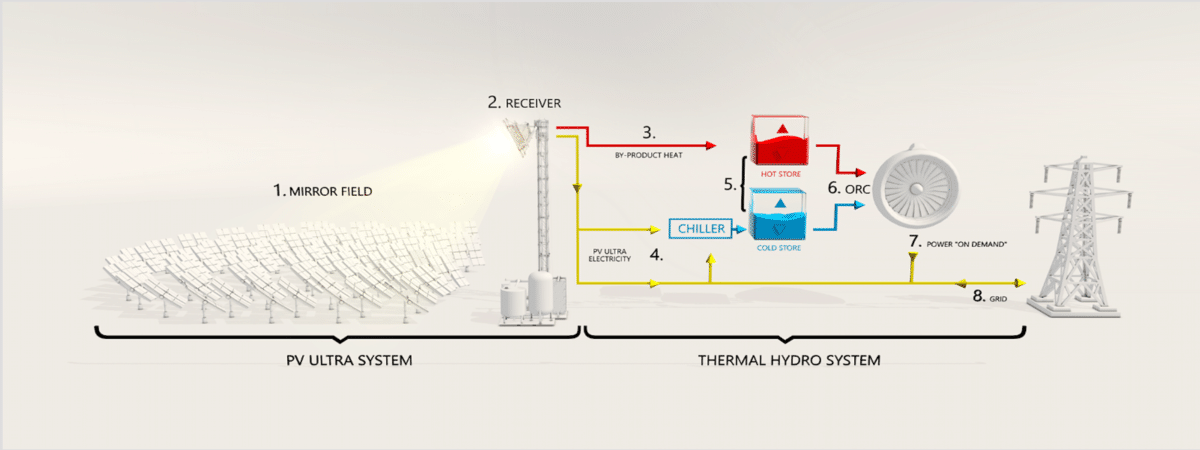
RayGen’s tech & supporters
Based in Melbourne, RayGen’s proprietary PV Ultra solar towers and electro-thermal energy storage technologies have received backing from major players in the last years, including becoming a focus for Dutch renewables company Photon Energy Group.
It has also been backed by Australia’s largest electricity “gentailer” AGL Energy, Norwegian oil company Equinor, Schlumberger New Energy and Chevron Technology Ventures.
How the technology works is by focusing sunlight with a field of aligned mirrors, or heliostats, onto a tower-mounted receiver containing an array of PV Ultra modules made of gallium arsenide PV cells. Around one third of incident sunlight is directly converted into electricity by the PV cells, while the remaining two thirds is captured in the form of heated water, used to actively cool the modules during operation.
The heat extracted from the PV Ultra modules is then stored in two insulated water reservoirs with a 90°C temperature difference. The ability to co-generate electricity and heat, the latter a captured by-product, makes the facility highly efficient.
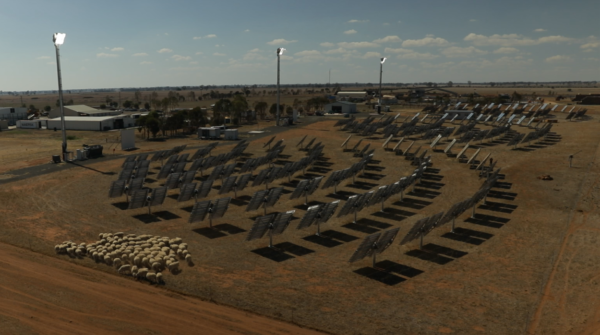
Image: RayGen
In total, each PV Ultra receiver contains approximately 400 PV Ultra modules, each generating 2.5 kW of electricity and 5 kW of heat. This produces 1 MW of electricity and 2M W of heat per field setup.
Carwarp project
The initial timeline for the Carwarp project to be fully commissioned was mid-2022, but the cold water pumping system was held up in Shanghai due to Covid-19 lockdowns.
For the time being, the project will be delivering solar electricity into the NEM with the company saying it expects the last remaining storage components to be delivered in the next fortnight.
Once complete, the storage system will also participate in wholesale energy and Frequency Control Ancillary Services (FCAS) markets once operational.
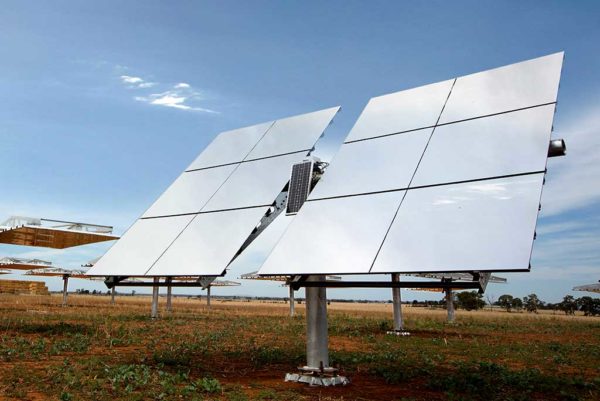
Australian Renewable Energy Agency
Both Carwarp and RayGen’s 1 MW pilot project in Newbridge, Victoria, have been partially funded by the Australian Renewable Energy Agency (ARENA), which allocated $15 million to Carwarp.
The project is wholly owned by RayGen and has an operational design life of 30 years.
South Australian project
Working with Photon Energy, RayGen’s technology is also planned for deployment in a major project in South Australia. The proposed SA project would have a total solar generation capacity of 300 MW with a grid connection capacity of 150 MW. The target energy storage capacity is 3.6 GWh, equivalent to 24 hours of full load, to the grid, from storage.
Photon, which entered a strategic partnership with RayGen in 2020 and in 2021 made a $3 million equity investment in in the company, said it has already secured 1,200 hectares of land for the project but as of late last year had not revealed the specific location.
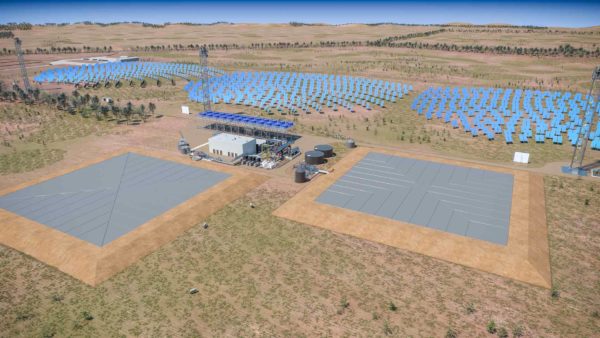
Image: Raygen
Solar hydro at Liddell
AGL Energy has previously said it it will assess whether RayGen’s technology could be installed at its Liddell facility, a major coal-fired plant in New South Wales scheduled to be fully decommissioned by April.
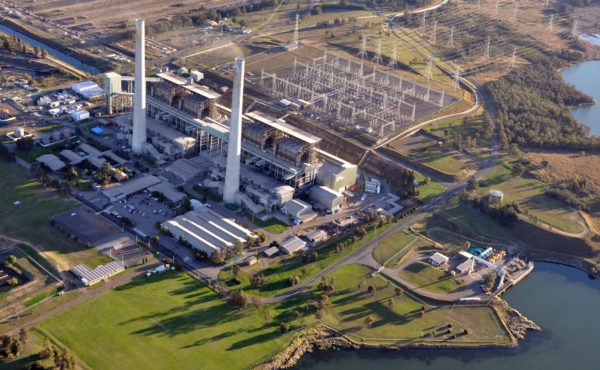
Image: AGL Energy
This content is protected by copyright and may not be reused. If you want to cooperate with us and would like to reuse some of our content, please contact: editors@pv-magazine.com.
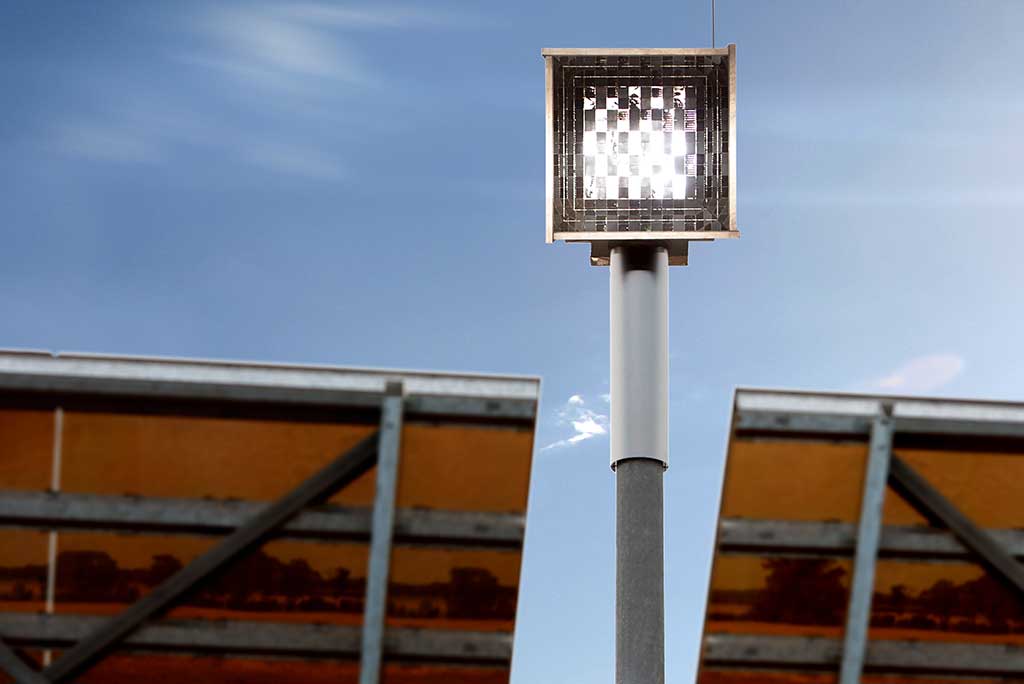








2 comments
By submitting this form you agree to pv magazine using your data for the purposes of publishing your comment.
Your personal data will only be disclosed or otherwise transmitted to third parties for the purposes of spam filtering or if this is necessary for technical maintenance of the website. Any other transfer to third parties will not take place unless this is justified on the basis of applicable data protection regulations or if pv magazine is legally obliged to do so.
You may revoke this consent at any time with effect for the future, in which case your personal data will be deleted immediately. Otherwise, your data will be deleted if pv magazine has processed your request or the purpose of data storage is fulfilled.
Further information on data privacy can be found in our Data Protection Policy.